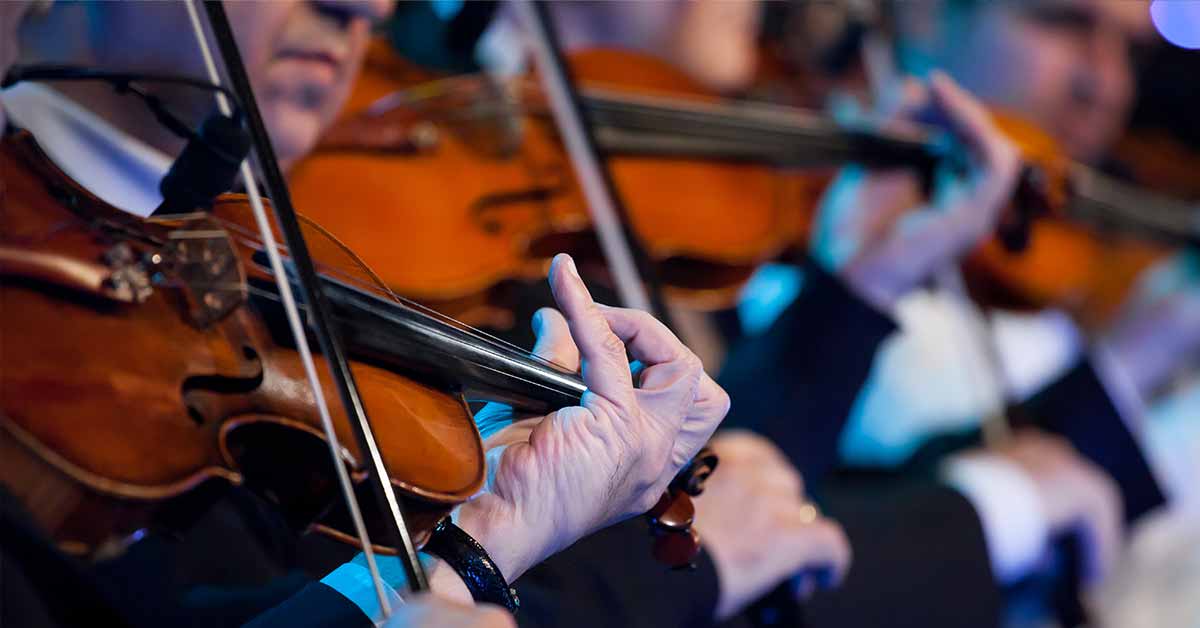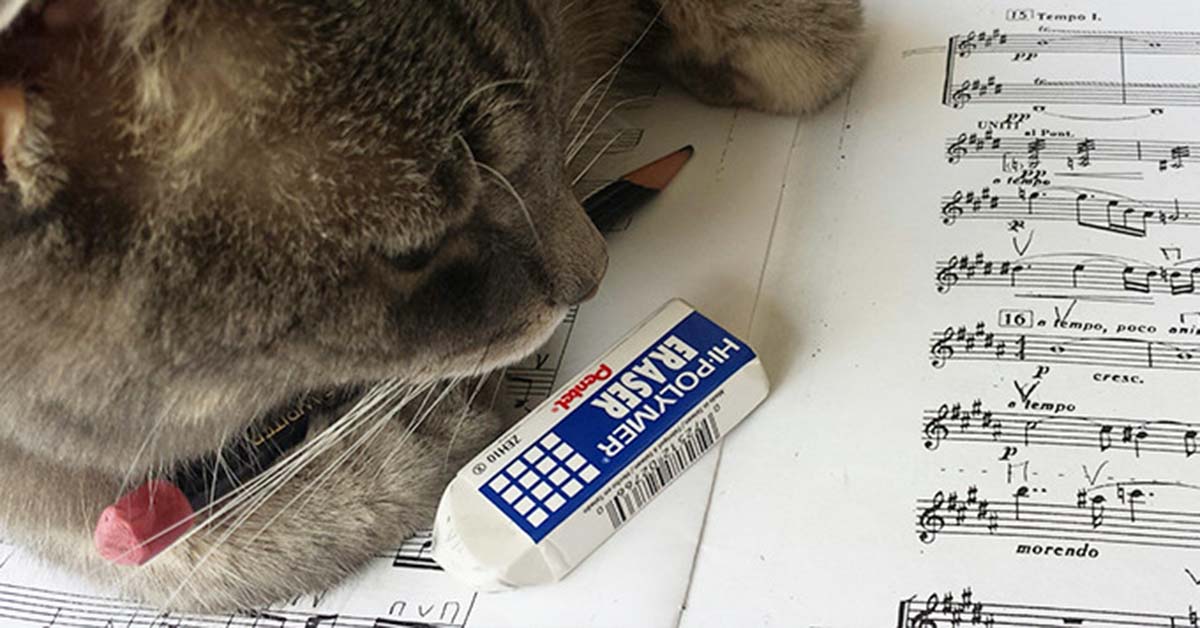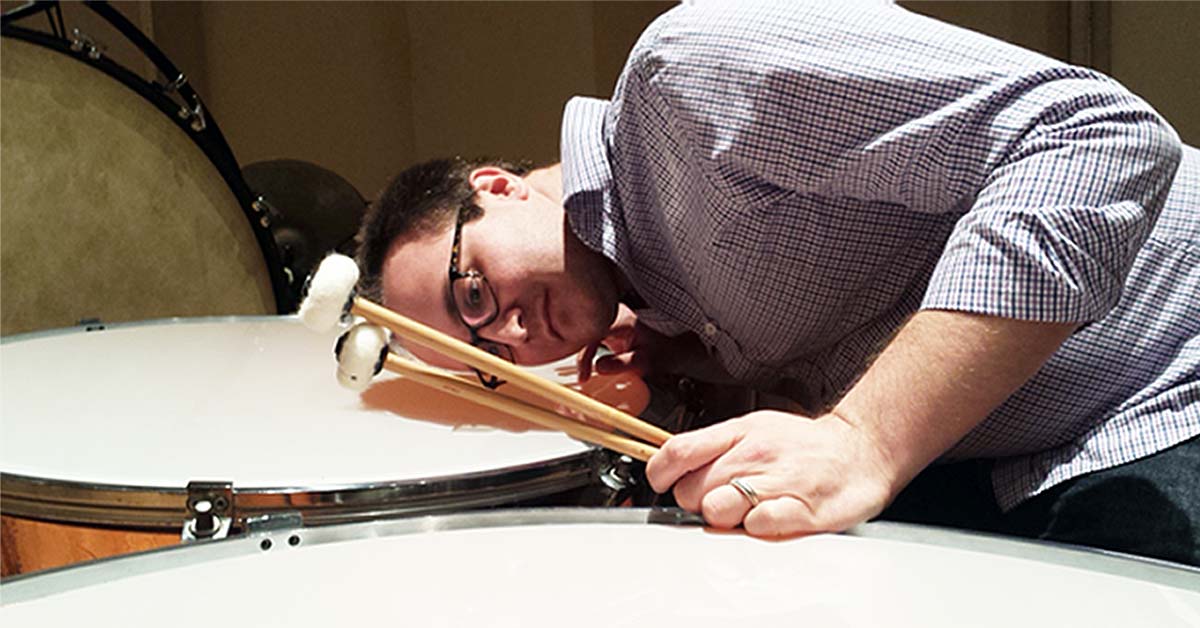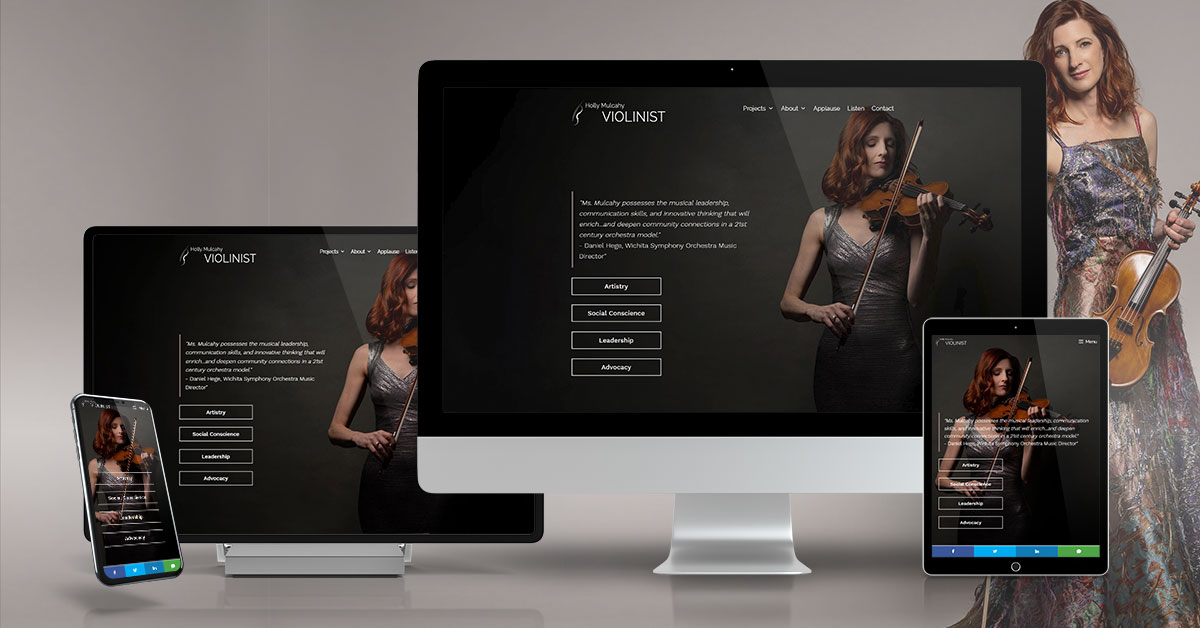There are many initiatives in the classical music industry to promote living, woman, and minority composers. You will see numerous festivals and special concert series devoted to supporting and promoting these composers. That is exactly what should be done.
Upon talking with many colleagues about their upcoming auditions, there is a noticeable trend that needs to stop. The music required for the orchestras’ upcoming auditions was written by composers who were long gone: long gone white male composers.
While these audition repertoire requirements have been considered “standard” for the last 25+ years, it is time to update the requirements for U.S. symphony orchestras to include more living, female, and minority composers.
I know this is a can of worms, and I can almost hear the groans from audition committees who are planning upcoming auditions. But how sincere is it to say your orchestra actively promotes outreach and diversity, new music, and gender equality when your orchestra lists only dead white male composers on the audition repertoire requirements?
Let’s look at a typical violin audition list:
- Mendelssohn Scherzo
- Brahms Symphony #4
- Schumann Symphony #2
- Mozart Symphony #39
- Shostakovich Symphony #5
- Tchaikovsky Nutcracker Overture
Obviously, there are many more, but you get the point: All. Dead. White. Males.
I’m not suggesting committees eliminate these standards, but keep a fair amount. Just adjust the required repertoire to reflect the progressiveness that is being touted. Here’s why the industry should change/adjust the repertoire requirements:
- It would be hypocritical not to.
- Committees can tell if a musician can count with music from any period. Something in the late 20th century or even 21st century would be super.
- Qualified candidates should be able showcase their tone, pitch, style, and technique with any genre or composer.
- There are now enough living, women, and minority composers’ works being regularly programmed, candidates should be expected to be proficient in that programming at the auditions.
Change doesn’t come without challenges. There will be copyrights to ask about but that’s not necessarily a new issue. But isn’t that something worth examining to stay relevant? I think so.
I’ll be curious what solutions and suggestions people in the industry have. And if your orchestra has included something besides a dead white male on the audition requirements, please share what that was in the comments.










What pieces by non-white, living, women would you like to see on audition lists, keeping in mind that applicants cannot be required to obtain rental only parts? Also, I’m currently serving on an audition committee. The old timers on the committee are only interested in having the applicants jump through the same hoops that they did decades before. So the list has nothing new on it. But we trust the well known excerpts to show us the best person for the job. That’s the purpose of an audition; the general public doesn’t know or care how progressive our list of excerpts is, and our publicity department isn’t involved with auditions.
Thank you so much for your comment. To answer your questions: Rentals are nothing new; look at Bartok Concerto For Orchestra, orchstras always need permission to legally use that in auditions. As far as applicants not obtaining rentals, that’s not new either. If the orchestra requires a rental part, it’s up to the orchestra to get permission and then distribute the excerpt.
Look at what is trending on the stage today. More and more orchestras are programming Harry Potter movie. The music from Hedwig’s Theme is a notoriously difficult lick for violins not to mention some of the other movements for other instruments. Have a look at Jennifer Higdon’s Blue Cathedral, too. That work is one of her most programmed works. Obviously there are many others to choose, but those are examples of options.
Additionally, while the general public doesn’t know about auditions, you better believe the applicants do. In my opinion, the audition goes both ways, musicians can tell a lot about a group by any number of things….even an orchestra audition list.
Yes, while John Williams is unfortunately a white man, my committee is entertaining my suggestion that we use some of his film music for sight reading in the upcoming audition.
You are right that applicants are checking out the employer as well. Do job hunters just out of school have the luxury of skipping auditions where the season’s programming isn’t cutting edge? I know I had other concerns back when I was hungry for a job.
Thank you for your additional thoughts. I think John Williams would be very appropriate for auditions on a number of levels. I’ve seen violinist after violinist nail Schumann Scherzo, yet completely fall apart on Star Wars and Harry Potter and then wonder why their tenure review got extended.
I see your point on newly graduated job hunters, but the industry is changing and we all need to adjust. The knee jerk to standards is a fast way to pile together an audition list without much thought. Job hunters will play anything and will likely welcome a reality check by a industry that often is seen as irrelevant and dying.
If a violinist who can nail Schumann falls apart in Harry Potter/Star Wars wouldn’t it be safer to assume they didn’t prepare their part rather than suggest it replace standard repertoire on the audition list? Everyone at this point knows John Williams scores are no walk in the park.
Thank you for your comment. I disagree that everyone at this point knows Williams is no walk in the park. Time and time again his music surprises the new comers and season professionals alike. I do agree what LA Phil is doing by adding it (not replacing other rep) to their audition list. In the article, it suggested to replace standard rep, just to adjust with some frequently played composers’ (living, women, or ethnic) works.
With all due respect, I believe just about every orchestral musician has played some of the Star Wars score at some point in their careers and simply by looking at the upcoming week’s music should be able to determine the difficulty level.
“Irrelevant and dying” as applied to the classical music world is a pretty tired lens to view things thru. In many areas it is thriving.
If one is a job hunter and playing several auditions a year in order to find employment, a large degree of repertoire overlap from one audition to another would be appreciated I would think. As we all know, it’s one thing to prepare in the practice room and another one to perfect your audition when in front of the committee.
You seem to be missing the point of the article. Orchestras in the US are performing, with more regularity, more living, female, and ethic composers’ works. It is time to have a fair and balanced look at what potential candidates can offer. Nobody is saying let’s replace the standards or let’s make candidates jump through more hoops. What is being said is to add rep. that is existing regularly, to the auditions. LA Phil has done so for good reason. It’s a great start.
“Nobody is saying (…) let’s make candidates jump through more hoops. What is being said is to add rep. that is existing regularly, to the audition”
So what, 30 orchestra excerpts aren’t enough? Sorry, I can’t see how adding repertoire isn’t making candidates jump through more hoops. The level has never been so high, and there are still tons of orchestras not filling their vacancies. If your new recruits don’t work on their parts before the first rehearsal, that’s another problem. But it may also have to do with the fact that there are TONS of people who have been sitting in orchestras for ages, and have quit practicing almost for the same amount of time. Sorry, most of the problems don’t come from the audition rep., and neither from the newest members of the orchestras.
I don’t disagree with anything you state. That is an entirely different argument than the article, however. I brought up many of those points in an article I wrote in 2011. As for players who have quit practicing, that is yet another topic…one I should perhaps write on soon. Long story short on that, that is in the hands of artistic review, a conductor, and the CBA.
I’m totally getting the point. Living, female, trans, LBGTQ, ethnic or any combination shouldn’t be the basis for choosing audition rep. IMO. In programming yes.
Additionally I believe the overlap of standard repertoire from one major audition to another, with a degree of variability, is helpful to the candidates…. especially those who are taking numerous auditions in a given year.
Yes, Harry Potter is being programmed more this year than Bruckner 9, but over the course of a career is a musician going to be playing more Bruckner/Brahms/Mahler, Mozart/Haydn/Beethoven or Higdon/Williams? Adding excerpts based on the living, female, trans, LBGTQ, ethnic status of the composer to an often already large audition list is adding more hoops, can’t be otherwise.
So are you suggesting that music by any of the categories of composers not represented currently have no merit whatsoever? Should composers of color, female, and living just be quiet and know that their music offers no fundamental way of telling if an audition candidate can count, spiccato, phrase, play in tune, etc? Shall we keep doing things the same way because we’ve always done it that way? I do agree with you, auditions are too long, but it’s way, way past time to update a few criteria, otherwise, we are hypocrites in the art that should be for all.
This is a really interesting idea that I’d honestly never considered before, but it makes perfect sense— with out audition material, we are signaling our identity to potential members. I will definitely bring this up the next time I have input on some audition requirements.
My orchestra, the LA Phil, regularly branches out. Both the percussion audition and bass audition had John Adams on the list and the recent violin audition had John Williams on the list. That being said, the standards are the standards for a reason. The idea that there are a ton of people who can play the standards and it’s not enough is lackluster. You’re very lucky to get a single player that plays with true artistry at an audition on these very difficult excerpts and those that can shine through brilliantly.
Thank you for your comment, I am so glad to hear LA is leading in this part of the audition lists. I do hope more orchestras follow the progressive direction of LA Phil. Obviously there are standards that need to remain on the lists, but branching out allows for an acknowledgment that orchestras are playing works in our century on a more regular basis.
At the last few Atlanta Symphony bass auditions, I’ve managed to get at least one 20th century work on the list. Granted, it’s another dead white guy, but certainly one of the cooler ones, and it’s an excerpt that shows whether a player knows how to swing (the “Cool” fugue from Bernstein’s WSS dances). I feel that if an orchestra plays as much music of the past 50 years as we do, we ought to expect candidates that can demonstrate mastery of the different skills required.
Funny, though – when I suggested to the audition committee that we ought to include something 20th century (or even, dare I say it, 21st), one venerable colleague pointed to the old list and said, “But Pulcinella is 20th century.” I spared him the music history lecture.
I think it’s great you are so vocal in trying to update the rep list, especially since Atlanta is one of the trail blazers in playing so many successful living composers!
Anne Lanzilotti, viola faculty at Univ. Northern Colorado, has progressive audition requirements
In the spirit of leading by example, what pieces (other than those by dead white males) does the Chattanooga Symphony Orchestra list for violin auditions?
That is a very fair question! There have been instances where other sections have used newer works, so I intend to update the violin rep list next time we have auditions.
It would be instructive and helpful to know what new pieces you will include on your next violin rep list.
Ok, I’m speaking from Europe, where traditions and level might be different, but…
Auditions are not about seeing who is qualified (that would be easy, 90% of the young people reaching a 2nd round play better than anybody who’s been sitting in an orchestra for 20 years ; and if we talk about experience, listen to the leading youth orchestras out there…), there are about seeing who is MOST qualified.
“Committees can tell if a musician can count with music from any period.”
It’s very tempting to rush in a Mozart symphony, much easier not to do it in Brahms. So if I ask for Mozart 35, 39, 40 (speaking about my instrument), it’s not because Mozart is a famous white Austrian composer from 250 years ago; it’s because it’s hard, and it shows us what we want to see.
“Qualified candidates should be able showcase their tone, pitch, style, and technique with any genre or composer.” Same thing. Easy to play Brahms or Schumann or Dvorak in tune. Harder to play Haydn or Schubert with no hearable mistakes. On the other hand, harder to find the right sound for Brahms than for Haydn/Mozart (or Shostakovich, or Higdon, or Dutilleux). That’s why (in my humble opinion) we ask for both. Once more, contemporay music is, most of the time, much easier. Show me one piece written after 1950 which would require more work than Brahms violin concerto or Schumann cello concerto. It might need some left hand practice, but appart from that…
Last and certainly not least. Candidates who audition already have to learn roughly 50 different orchestra excerpts from standard repertoire, which represent 90% of the excerpts regularly asked, in addition to the two or three (sometimes complete) concertos. Would you really want to ask them for even more work? If your orchestra regularly plays Harry Potter or Higdon, Adams, and you want candidates to know this repertoire before they join the orchestra, ok, it makes sense. Otherwise, it’s making their life harder, and I really think it’s hard enough.
Thank you for sharing your thoughts and opinions. Are you suggesting that we exclude living, female, and minority composers from audition rep?
?? Absolutely not. I’m saying orchestra excerpts should be chosen according to their relevance to the audition, to the job, not according to who composed them.
Ah, I get what you’re saying and I agree, which is why I suggest that many American orchestras look at their rep list for auditions and add music that is seeing more time on the concert stage. There are any number of works by Jennifer Higdon that I would use as acceptable excerpts; not only does she offer a beautiful phrase and technique to showcase, there are standards of performance practices that any audition committee can compare candidates upon. Not that Higdon is the only composer, just one of them that you mentioned.
I have never heard of applicants disregarding an audition because of the added amount of time to prepare a new work; quite the contrary, many seek it out because it keeps the audition fresh. Candidates typically look at the workload of all excerpts combined. Example: will it take 10 hours to play through the list (this was Utah Symphony about 14 years ago), or will it take 20 minutes? Either way, in American orchestras, it is not uncommon to have non-standards on the rep lists. Since that is the case, I would like to encourage spreading the representation in a more equal fashion, especially if the orchestra is routinely performing said works.
Just stop.
Yours
A cellist
I’m curious if you’d like to explain your comment a bit more?
As a note to readers, a comment from an individual who was purportedly a cellist living in the UK was recently removed after it was determined that the author was using an email service designed to deliberately circumvent anti-spam and anti-trolling measures. All discourse conforming to the comment policy is encouraged and readers must use a valid email address that can be used to confirm authenticity.
Unfortunately, Mozart just shows more than anybody else. For a time, here in the Chicago Symphony, our former music director Daniel Barenboim required all viola applicants to play the Sinfonia Concertante. By the time the applicant had held the E Flat for two bars and then descended the E flat major scale, I knew far more about their playing than I would discern in 20 minutes of hearing a candidate fighting through the thickets of any contemporary composer you could name–black, white, male, female, or from any corner of the earth.
I totally agree with your statement regarding Mozart. His work is such a great and useful tell on future colleagues. Although, just like conductors who are experts at Mozart and nothing else, I expect audition candidates to be proficient on other genres. Adding living, female, ethnic composers’ works to the list gives a rounded vantage of a pool of applicants in any audition day. I focus on living, female, and ethically diverse composers works in the article because I am seeing those works more and more on symphonic schedules across the country and wondered why the audition lists are not updated to showcase an important component. For instance, there are more performances of Williams’ Harry Potter this season than Bruckner 9. There are more performances of Higdon’s Blue Cathedral than a few of the other tired regulars showing up on lists these days. I agree, keep the Mozart, but let’s be equal with our requirements.